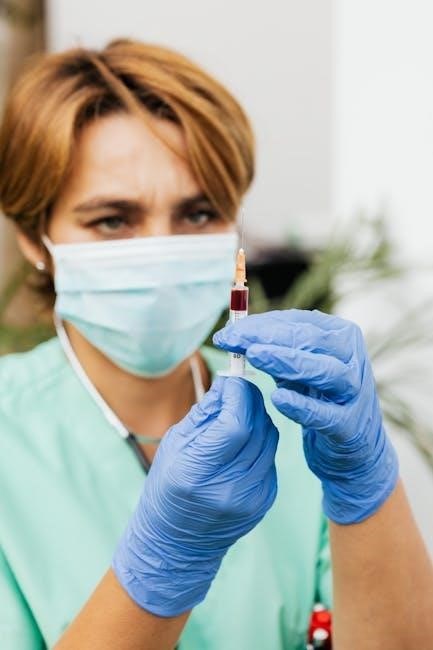Phlebotomy worksheets are essential educational resources for students and professionals, offering interactive exercises, drag-and-drop activities, and flashcards. They enhance learning, improve retention, and ensure adherence to CLSI guidelines and best practices.
1.1 Definition and Purpose
Phlebotomy worksheets are structured tools designed to guide learners through theoretical and practical aspects of blood collection. Their purpose is to enhance understanding of venipuncture techniques, safety protocols, and best practices. These resources often include interactive exercises, such as drag-and-drop activities and flashcards, to reinforce key concepts. Worksheets align with CLSI guidelines, ensuring adherence to industry standards. They serve as invaluable aids for both students and professionals, promoting competence and confidence in phlebotomy procedures while emphasizing patient safety and accurate test outcomes.
1.2 Importance in Phlebotomy Training
Phlebotomy worksheets play a crucial role in training by providing structured, hands-on practice for mastering blood collection techniques. They help learners apply theoretical knowledge to real-world scenarios, ensuring proficiency in venipuncture and adherence to safety protocols. Interactive exercises and case studies within worksheets enhance problem-solving skills and prepare students for diverse patient situations. By reinforcing CLSI guidelines and best practices, these tools are essential for building confidence and competence in future phlebotomy professionals.
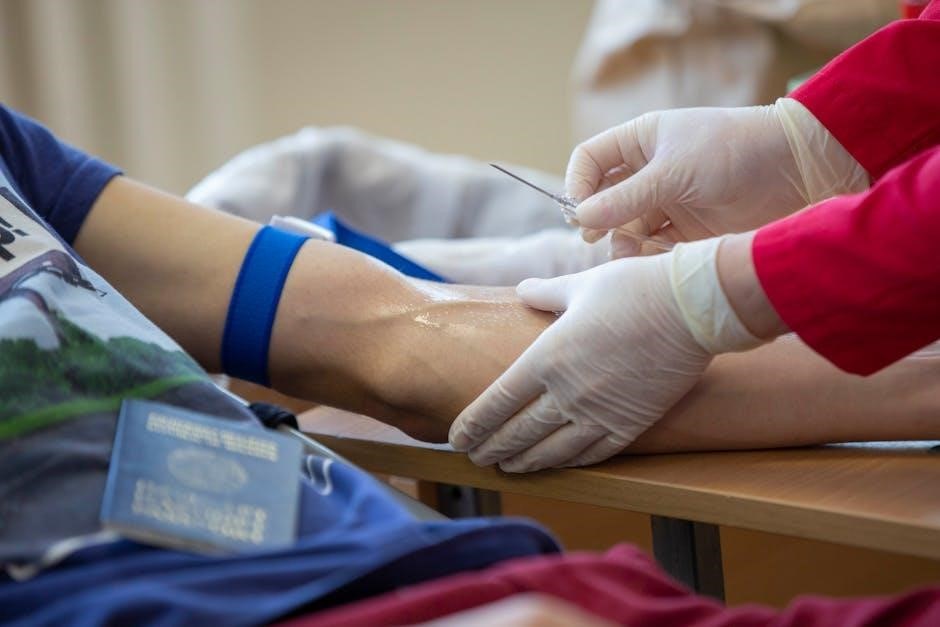
Key Concepts Covered in Phlebotomy Worksheets
Phlebotomy worksheets cover essential topics like venous anatomy, blood collection methods, and CLSI guidelines. They include interactive exercises and practical skills to enhance learning and proficiency in phlebotomy.
2.1 Anatomy and Physiology of the Venous System
Phlebotomy worksheets emphasize the venous system’s structure and function, focusing on veins responsible for blood circulation. Key areas include the cephalic, basilic, and median cubital veins, often used in venipuncture. Understanding venous anatomy helps in identifying optimal blood collection sites and avoiding complications. These worksheets also cover how blood flows through veins, ensuring proper technique and patient safety during procedures.
2.2 Blood Collection Methods and Procedures
Phlebotomy worksheets detail essential blood collection techniques, including venipuncture and capillary puncture. They outline step-by-step procedures, emphasizing proper patient preparation, vein selection, and needle insertion. These materials also cover safety protocols, such as using tourniquets and ensuring sterile conditions. Interactive exercises and procedural videos help learners master skills like blood flow direction and avoiding common errors. Adherence to CLSI guidelines is stressed to ensure accurate and safe blood collection practices in clinical settings.
2.3 CLSI Guidelines for Phlebotomy Practices
Phlebotomy worksheets emphasize adherence to CLSI (Clinical and Laboratory Standards Institute) guidelines, ensuring standardized practices. These resources often reference the CLSI H03-A6 document, which outlines proper venipuncture techniques and safety measures. Worksheets include procedural videos and best-practice checklists, helping learners understand protocols like patient identification, needle safety, and sample handling. By aligning with CLSI standards, these tools promote accurate and reliable blood collection, reducing errors and improving patient care outcomes in clinical settings.
Benefits of Using Phlebotomy Worksheets
Phlebotomy worksheets enhance learning by reinforcing theoretical knowledge and practical skills. They improve retention, provide hands-on practice, and ensure adherence to standardized procedures, boosting overall competence in phlebotomy.
3.1 Reinforcement of Theoretical Knowledge
Phlebotomy worksheets reinforce theoretical knowledge by providing structured exercises that align with critical concepts. Interactive activities, such as drag-and-drop exercises and flashcards, help students grasp complex topics like venous anatomy and blood collection procedures. These tools ensure a strong foundation in phlebotomy principles, enabling learners to apply theoretical knowledge effectively in practical scenarios while adhering to CLSI guidelines and best practices.
3.2 Practical Application of Skills
Phlebotomy worksheets provide practical exercises that allow learners to apply theoretical knowledge in real-world scenarios. Interactive tools, such as procedural videos and step-by-step guides, help master blood collection techniques. These resources simulate actual patient interactions, ensuring proficiency in venipuncture and capillary puncture. By bridging classroom learning with hands-on practice, worksheets enhance clinical competence and prepare professionals to adhere to CLSI guidelines and deliver high-quality patient care.
3.4 Improved Retention of Information
Phlebotomy worksheets enhance information retention through interactive exercises, flashcards, and repetitive practice. These tools reinforce key concepts, such as venipuncture techniques and CLSI guidelines, ensuring long-term memory retention. Interactive drag-and-drop activities and procedural videos further solidify understanding. By applying knowledge practically, learners achieve better retention, reducing errors and improving competence in blood collection procedures and patient care scenarios.
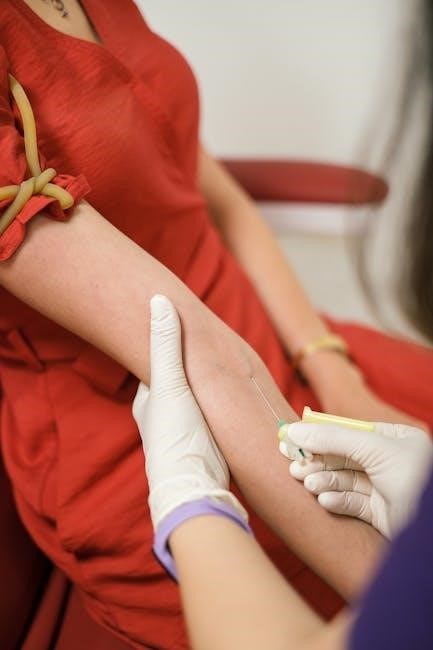
Challenges in Phlebotomy Training
Phlebotomy training presents challenges like mastering venipuncture techniques, understanding CLSI guidelines, and managing patient anxiety, requiring interactive tools and practical exercises to ensure competency.
4.1 Common Challenges Faced by Students
Students often struggle with mastering venipuncture techniques, understanding complex anatomy, and adhering to CLSI guidelines. Challenges include difficulty in locating veins, managing patient anxiety, and ensuring proper infection control. Additionally, interpreting test results and understanding their clinical significance can be overwhelming. Practical skills, such as handling equipment and maintaining sterility, also pose hurdles. Worksheets help bridge these gaps by providing interactive exercises and quizzes to reinforce learning and build confidence.
4.2 Overcoming Difficulties with Worksheets
Phlebotomy worksheets provide structured exercises and quizzes to address common challenges. Interactive tools, such as drag-and-drop activities and flashcards, enhance understanding of venipuncture techniques and CLSI guidelines. Step-by-step procedures and case studies help students apply theoretical knowledge practically. Worksheets also include guided practice for infection control and equipment handling, ensuring adherence to safety protocols. By breaking down complex concepts into manageable tasks, worksheets empower students to master skills and build confidence in real-world scenarios.
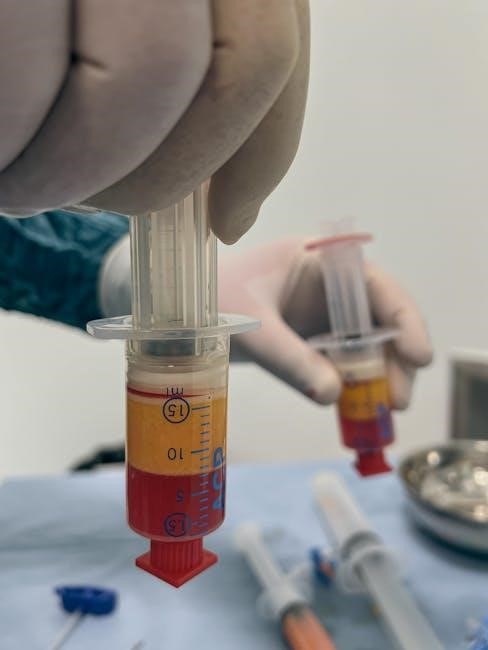
Preparation for Phlebotomy Exams
Phlebotomy worksheets offer interactive exercises, practice questions, and real-world scenarios to reinforce learning. They align with CLSI guidelines, ensuring students are well-prepared for certification exams and professional challenges.
5.1 Study Materials and Resources
Effective study materials, including phlebotomy worksheets in PDF format, are indispensable for mastering venipuncture techniques and understanding laboratory protocols. These resources often include interactive exercises, such as drag-and-drop activities and flashcards, to reinforce theoretical knowledge. Procedural videos demonstrating blood collection methods and laboratory manuals, like the CLSI H03-A6 guidelines, provide practical insights. Additionally, access to case studies and practice exams helps learners apply their skills in real-world scenarios, ensuring comprehensive preparation for certification and professional competency.
5.2 Importance of Practice Worksheets
Practice worksheets are vital for reinforcing phlebotomy skills and knowledge. They provide hands-on experience with venipuncture procedures, blood collection methods, and safety protocols. Interactive exercises, such as drag-and-drop activities and flashcards, enhance retention of CLSI guidelines and best practices. Worksheets also help students familiarize themselves with real-world scenarios, improving their ability to apply theoretical concepts practically. Regular use of practice worksheets ensures competency and confidence, reducing errors in blood collection and preparation for certification exams.
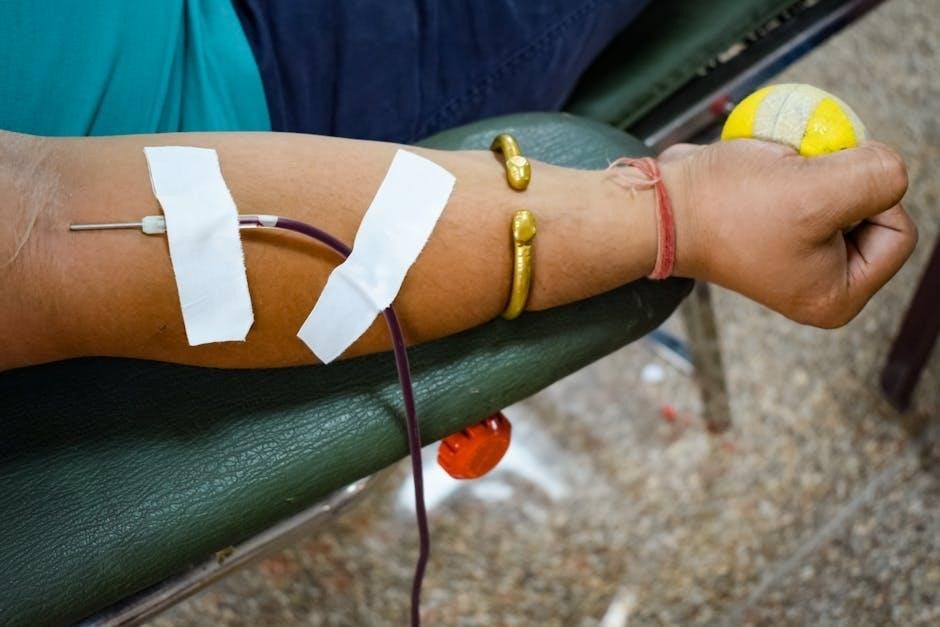
Safety Protocols in Phlebotomy
Safety protocols in phlebotomy are crucial to prevent accidents and ensure a safe environment. Adherence to guidelines minimizes risks, such as exposure to bloodborne pathogens, and integrates into effective practice.
6.1 Infection Control Measures
Infection control is critical in phlebotomy to prevent the spread of pathogens. Proper hand hygiene, use of gloves, and sterilization of equipment are essential. Phlebotomy worksheets emphasize adherence to CLSI guidelines, ensuring safe practices. Personal protective equipment (PPE) like masks and gloves must be worn. Surfaces and tools should be disinfected regularly. These measures protect both patients and healthcare workers, maintaining a safe environment for blood collection procedures.
- Hand hygiene before and after procedures.
- Use of sterile needles and properly packaged supplies.
- Disposal of biohazardous waste in designated containers.
6.2 Proper Use of Protective Equipment
Proper use of protective equipment is vital in phlebotomy to ensure safety. Gloves, masks, and eye protection are essential to prevent exposure to bloodborne pathogens. Phlebotomy worksheets provide detailed checklists and guidelines for donning and doffing PPE correctly. Properly fitted masks and gloves must be worn during procedures. Safety goggles or face shields are recommended for added protection. These practices, outlined in CLSI guidelines, help minimize risks and maintain a sterile environment for blood collection.
- Gloves must be worn during all procedures.
- Masks should cover the nose and mouth.
- Eye protection is necessary for splash prevention.
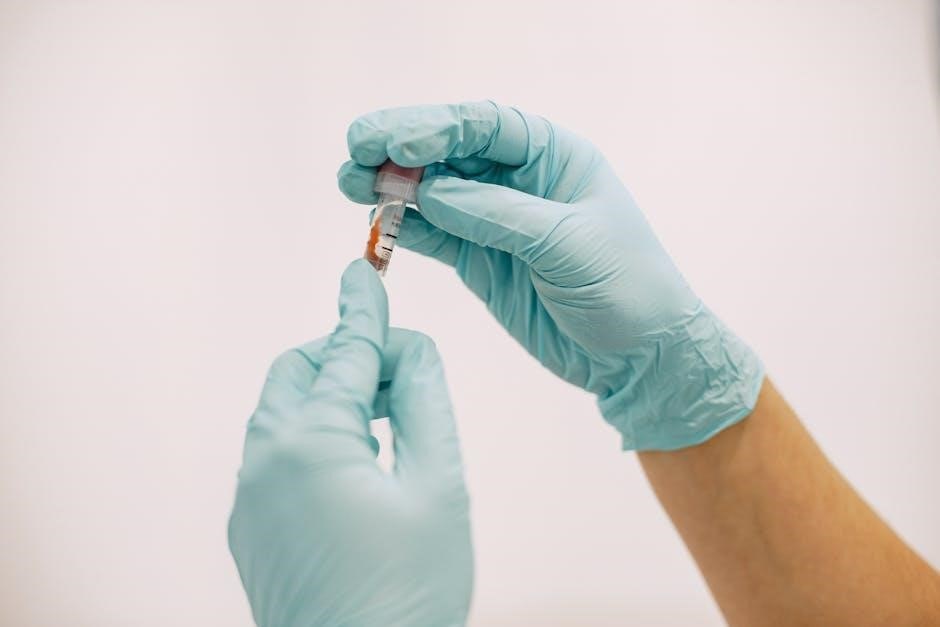
Phlebotomy Equipment and Supplies
Phlebotomy requires specific equipment like needles, vacutainers, and tourniquets. Proper use and maintenance ensure safe and effective blood collection, as outlined in CLSI guidelines.
7.1 Types of Needles and Tubes
Phlebotomy worksheets often detail the various types of needles and tubes used in blood collection. Needles vary in gauge, with larger gauges (e.g., 21-25) being thinner and causing less discomfort. Tubes are color-coded to indicate additives for specific tests, such as serum separator tubes or EDTA tubes. Worksheets also cover winged needles and butterfly systems, which are ideal for difficult venipunctures. Proper selection of needles and tubes ensures accurate test results and patient safety, aligning with CLSI H03-A6 guidelines.
7.2 Maintenance and Sterilization
Proper maintenance and sterilization of phlebotomy equipment are critical for preventing infections and ensuring accuracy in blood collection. Worksheets often outline procedures for cleaning and disinfecting equipment, such as needles and tubes, between uses. Autoclaving is a common method for sterilization, while disposable equipment minimizes contamination risks. Adherence to CLSI guidelines ensures all steps are followed meticulously, maintaining patient safety and the integrity of blood samples for reliable test results.
Venipuncture Techniques
Venipuncture involves precise steps to access veins safely and effectively. Worksheets detail procedures, emphasizing patient preparation, site selection, and proper needle insertion to minimize complications.
8.1 Step-by-Step Procedures
Phlebotomy worksheets guide students through detailed venipuncture steps, ensuring proper technique and safety. Begin by preparing the patient, selecting appropriate equipment, and positioning the arm. Palpate the vein, cleanse the site, and insert the needle at a 15-20° angle. Collect blood into the correct tubes, withdraw the needle, and apply pressure. Adherence to CLSI guidelines ensures accurate and safe blood collection, minimizing complications and improving patient outcomes.
8.2 Avoiding Common Errors
Phlebotomy worksheets emphasize avoiding errors like incorrect needle angles, insufficient vein palpation, and improper patient positioning. Common mistakes include using the wrong needle size, failing to use safety needles, and not applying adequate pressure post-venipuncture. These errors can lead to complications such as hematomas or nerve damage. Adherence to CLSI guidelines and proper training helps minimize these issues, ensuring safe and accurate blood collection procedures.
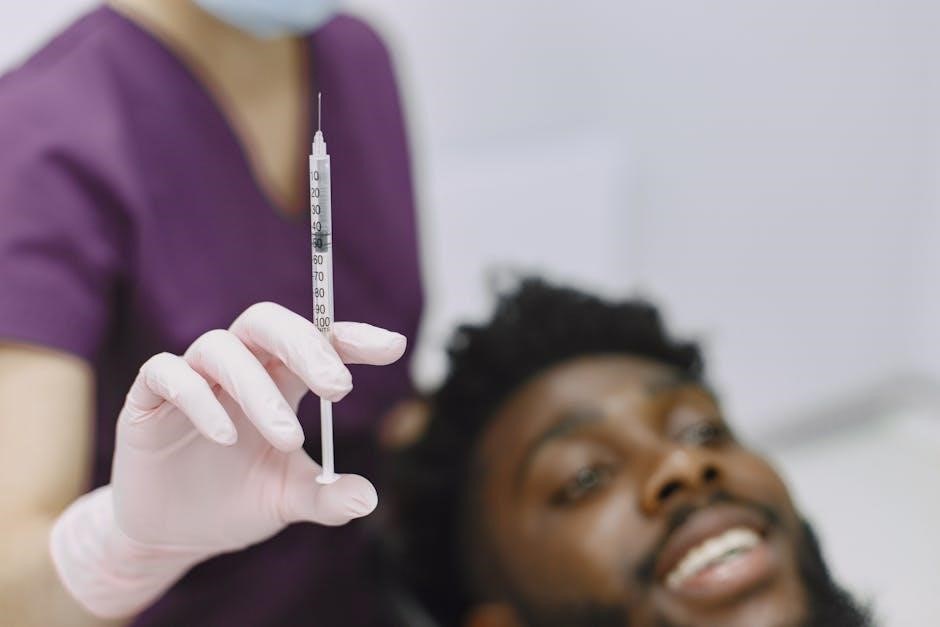
Special Considerations in Phlebotomy
Phlebotomy requires special attention for pediatric, geriatric, and special-needs patients. Techniques must be adapted to ensure safe and effective blood collection in these vulnerable populations.
9.1 Pediatric and Geriatric Patients
Phlebotomy worksheets emphasize specialized techniques for pediatric and geriatric patients. For children, age-appropriate communication and distraction methods are crucial. Geriatric patients often require patience due to fragile veins or mobility issues. Worksheets provide case studies and scenarios to improve understanding of these unique challenges, ensuring safe and effective blood collection in diverse populations.
9.2 Patients with Special Needs
Phlebotomy worksheets address the unique challenges of working with patients who have special needs. They include strategies for effective communication, use of visual aids, and adapted techniques to ensure comfort and safety. Interactive exercises and case studies help phlebotomists understand how to approach patients with disabilities, sensory issues, or other special requirements, promoting empathy and skill development in diverse clinical settings.
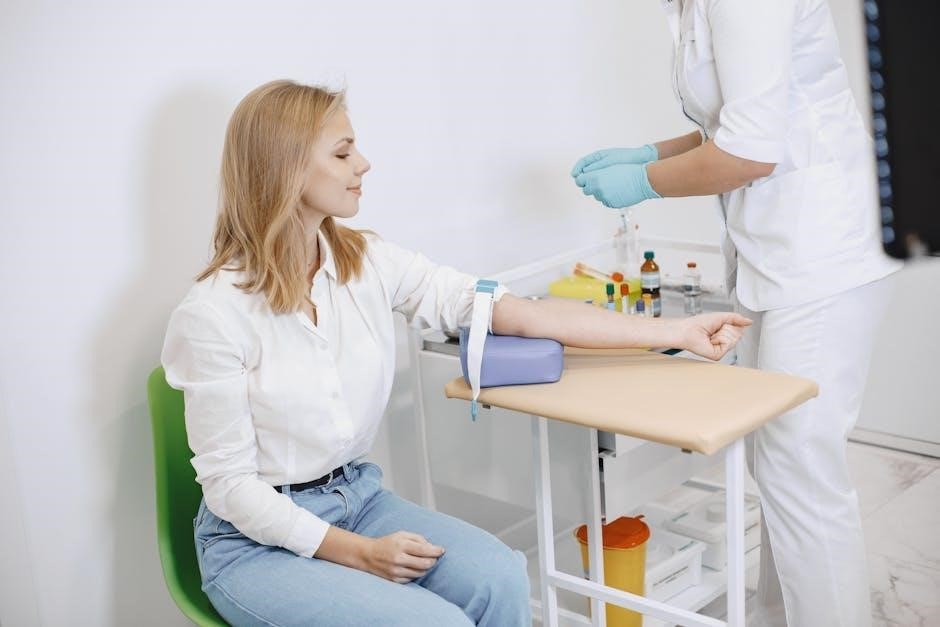
Common Errors in Blood Collection
Common errors include mislabeling samples, incorrect needle sizes, and improper venipuncture techniques, which can lead to inaccurate results or patient complications.
10.1 Identification and Prevention
Common errors in blood collection include incorrect needle angles, improper tourniquet application, and failure to verify patient identity. To prevent these, phlebotomists must adhere to CLSI guidelines, use safety protocols, and follow step-by-step procedures. Proper training, regular practice, and the use of checklists can minimize mistakes. Phlebotomy worksheets often include exercises to identify and correct such errors, ensuring accurate and safe blood collection practices.
10.2 Impact on Test Results
Errors in blood collection can significantly affect lab test accuracy, leading to misleading results. Issues like hemolysis, contamination, or improper tube selection can render samples unusable. This may result in delayed diagnoses, incorrect treatments, or the need for retesting. Phlebotomy worksheets emphasize the importance of precise techniques to ensure reliable outcomes. Accurate blood collection is critical for maintaining patient safety and the integrity of lab results, ultimately supporting effective healthcare decisions.
Phlebotomy Worksheets as a Learning Tool
Phlebotomy worksheets serve as interactive learning tools, offering drag-and-drop exercises, flashcards, and case studies to enhance practical understanding and reinforce theoretical concepts effectively.
11.1 Interactive Exercises and Quizzes
Interactive exercises and quizzes in phlebotomy worksheets PDFs provide engaging ways to test knowledge and skills. These tools often include drag-and-drop activities, matching games, and multiple-choice questions. They cover topics like venipuncture techniques, CLSI guidelines, and patient safety protocols. Interactive exercises allow learners to apply theoretical knowledge practically, while quizzes assess understanding and retention. Such features cater to diverse learning styles, making phlebotomy education more effective and accessible for students and professionals alike.
11.2 Case Studies and Scenarios
Case studies and scenarios in phlebotomy worksheets PDFs present real-world situations, enabling learners to apply theoretical knowledge. These exercises simulate challenges like difficult venipunctures or patient anxieties, encouraging critical thinking. Scenarios often include diverse patient demographics, such as pediatric or geriatric cases, and special needs patients. By analyzing these situations, students develop problem-solving skills and learn to adapt techniques to various clinical settings, enhancing their preparedness for real-life phlebotomy practices.
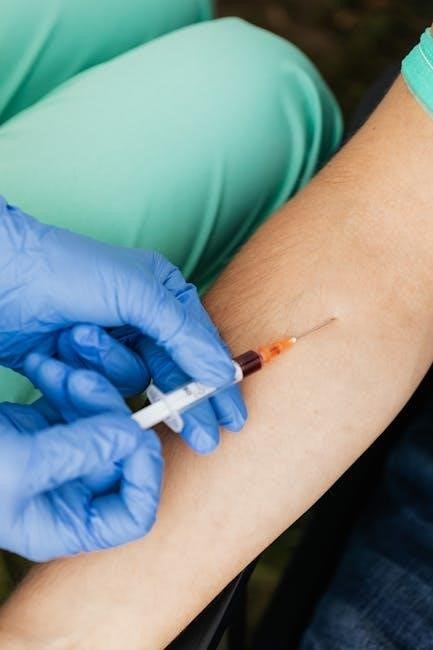
Resources for Phlebotomy Worksheets
Phlebotomy worksheets often reference CLSI H03-A6 guidelines and NCPT recommendations, ensuring accurate blood collection methods. These resources provide validated materials for learning and training purposes effectively.
12.1 CLSI H03-A6 Guidelines
CLSI H03-A6 guidelines provide standardized procedures for phlebotomy practices, ensuring accuracy and safety in blood collection; These guidelines cover venipuncture techniques, safety protocols, and sample handling, serving as a foundational resource for phlebotomy education. Worksheets based on CLSI H03-A6 help students master proper procedures, reduce errors, and comply with professional standards. Regular training with these guidelines enhances proficiency and consistency in phlebotomy practices, making them indispensable for both learners and professionals.
12.2 NCPT and ASCLS Recommendations
NCPT and ASCLS recommendations complement phlebotomy worksheets by emphasizing best practices in blood collection and patient care. These guidelines stress the importance of proper sample handling, patient identification, and safety protocols. They also provide frameworks for competency assessment and continuing education, ensuring phlebotomists meet professional standards.
Worksheets aligned with NCPT and ASCLS recommendations often include exercises on ethical practices, patient communication, and legal considerations. These resources help phlebotomy students and professionals apply theoretical knowledge in clinical settings, promoting accurate and reliable blood collection procedures.
Digital Tools for Phlebotomy Education
Digital tools, such as PDF worksheets and online platforms, provide interactive learning experiences. Mobile apps and procedural videos enhance phlebotomy education, offering accessible and engaging resources for students and professionals.
13.1 PDF Worksheets and Online Platforms
PDF worksheets are widely used for phlebotomy training due to their accessibility and ease of use. They often include interactive exercises, drag-and-drop activities, and flashcards to enhance learning. Online platforms complement these resources by offering digital versions of worksheets, procedural videos, and guided tutorials. These tools align with CLSI guidelines and provide students with flexible learning opportunities, ensuring they master venipuncture techniques and other essential skills effectively.
13.2 Mobile Apps for Phlebotomy Training
Mobile apps are revolutionizing phlebotomy education by providing on-the-go access to training materials. These apps often feature interactive exercises, flashcards, and procedural videos, allowing students to practice venipuncture techniques and review CLSI guidelines anytime, anywhere. They also offer multimedia resources, such as tutorials and quizzes, to cater to diverse learning styles. By leveraging mobile technology, apps enhance engagement and convenience, making phlebotomy training more accessible and effective for modern learners.
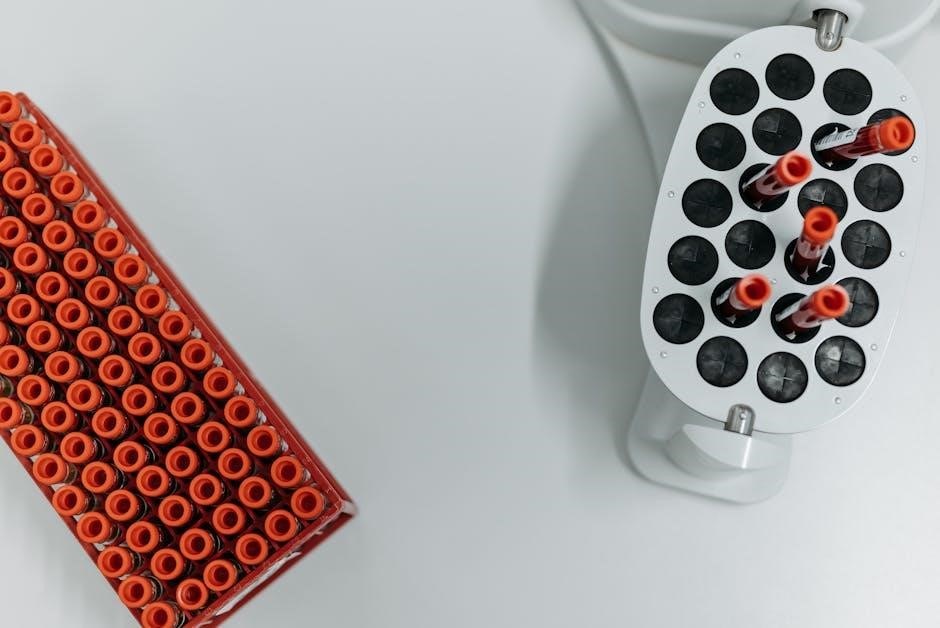
Future Trends in Phlebotomy Education
Future trends include virtual reality simulations for realistic training and AI-driven platforms for personalized learning, enhancing accessibility and engagement in phlebotomy education.
14.1 Integration of Virtual Reality
Virtual reality (VR) is revolutionizing phlebotomy education by providing immersive, interactive simulations. Students can practice venipuncture and capillary collection in realistic, risk-free environments, enhancing their technical and decision-making skills. VR platforms allow repetition of procedures, reducing errors and building confidence. This technology also offers accessibility, enabling learners to train anytime and anywhere. Interactive exercises and real-time feedback further engage students, making phlebotomy training more effective and modern.
14.2 AI-Driven Learning Platforms
AI-driven learning platforms are transforming phlebotomy education by offering personalized learning experiences. These platforms analyze student performance to tailor content, ensuring focused improvement. Interactive exercises, such as drag-and-drop activities and flashcards, are enhanced with real-time feedback. AI also supports scenario-based training, simulating real-world challenges like venipuncture procedures. By adapting to individual needs, AI-driven tools optimize learning efficiency and engagement, preparing students for clinical settings more effectively.
Phlebotomy worksheets are invaluable tools for education and professional development. They provide structured learning, enhance retention, and ensure compliance with industry standards. By integrating interactive exercises and real-world scenarios, these resources prepare students for clinical challenges. As technology advances, AI-driven platforms and virtual reality will further enhance phlebotomy training, ensuring future professionals are well-equipped to deliver high-quality patient care.

